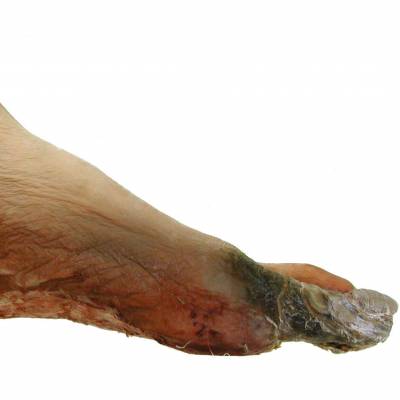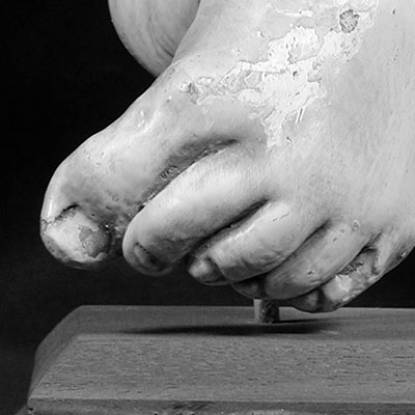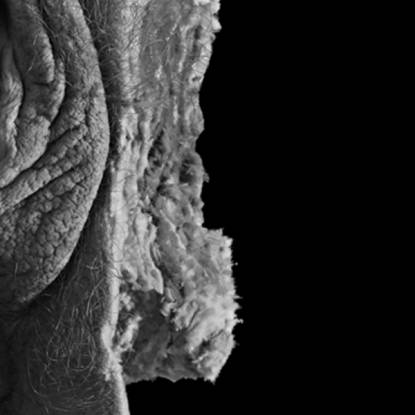Senile Dry Gangrene
Please note that this page includes images of human remains.

This foot shows dry gangrene of the toe. Gangrene is a type of necrosis (the premature death of cells in living tissue) caused by insufficient blood supply. It can occur after injury or infection and is also often associated with diabetes and long-term smoking.
If left untreated, the affected part will eventually fall off at the line where dead and living tissue meet.
Treatments for gangrene are determined by the location and extent of the damage. Possible treatments include revascularization (the restoration of blood flow), antibiotics or amputation.
During the American Civil War, a surgeon developed a new treatment using debridement (the removal of dead or damaged tissue) and bromide solutions. An even older treatment, dating to 1028, involved the use of fly maggots that consume only dead flesh and leave nearby living tissue unaffected. Known as maggot therapy, this method has re-emerged in recent times as a treatment for chronic tissue necrosis.
 Close
Close




